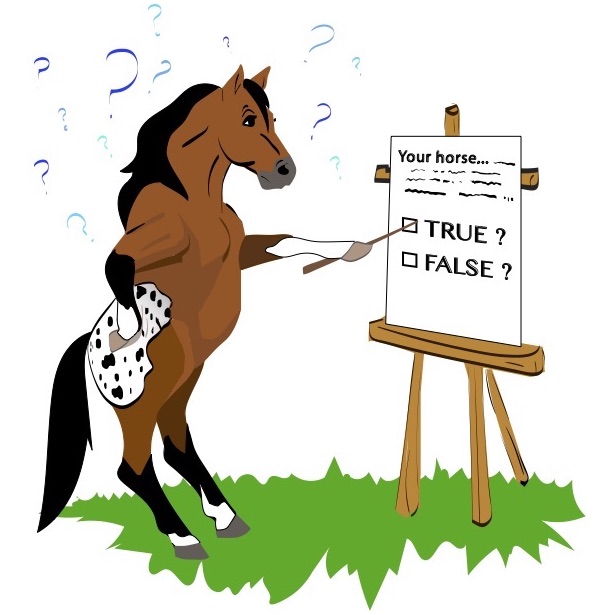
1.True or false: Any horse can eventually be ridden barefoot, given enough time to adapt plus the right trimming and management.
T / F
2. True or false: A barefoot horse should have his hooves trimmed every 4 to 6 weeks, just like a shod horse.
T / F
3. True or false: Pull-on hoof boots are the latest innovation to help barefoot horses remain comfortable on various terrain.
T / F
4. To maximize the hoof health of your barefoot horse, you should…
A) give him as much turnout as possible.
B) maintain him on a low-sugar diet.
C) keep him on the type of footing you typically ride him on.
D) all of the above.
HOW’D YOU DO? (Answers below.)
1. F is correct. Although many (and perhaps a majority) of horses can ultimately perform under saddle without shoes, some may need hoof boots to be ridden in certain circumstances. If you’d like to try the “barefoot way” with your horse, educate yourself on the topic, then use common sense and the advice of professionals to guide you. (Learn how three different riders made the shoes-or-not decision for their horses.)
2. T is correct. Ideally, a barefoot horse should be trimmed every 4 to 6 weeks by a hoof-care professional knowledgeable about this method of trimming. A traditional pasture trim or prep-for-shoeing isn’t necessarily the same as a trim based on natural hoof dynamics, but a “barefoot trim” can be learned by any interested farrier. (Learn the “basics of barefoot” from a natural-hoof-care expert.)
3. F is correct. Pull-on hoof boots in a wide variety of styles are old news; the full range of what’s now available includes glue-on boots, specialty pads, flexible epoxy fillers, casting material for custom fabrication, and more. (Want details? Discover a range of strategies to smooth your horse’s transition to barefoot.)
4. D is correct. All of these management strategies will affect how well your horse does without shoes. Constant movement over terrain similar to what you ride on helps his hooves become strong and adapt to that surface. Correct nutrition helps maintain the integrity of his hoof capsules. (Learn about the extra needs your horse’s hooves have in the summertime.)
Hey! Not already receiving H&R’s fun and informative newsletter? Sign up right now for The Ride.






